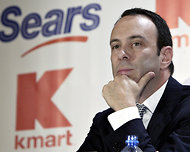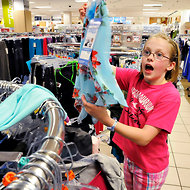AutoNation, which sells domestic and import brands at more than 250 dealerships across the country, said its fourth-quarter revenue increased 13 percent to $3.7 billion and its profits rose by 3 percent to $69 million.
The performance capped the company’s best annual results since 2006, and prompted Auto-Nation’s chief executive, Michael J. Jackson, to predict a continued surge in vehicle demand this year.
“There’s no question that we have turned the corner,” Mr. Jackson said in an interview. “It’s undeniable that the auto market is a bright spot in the overall economy.”
Previously, Mr. Jackson had been conservative in his assessments of the industry’s turnaround. But he said he expected overall vehicle sales in the United States to increase to 14 million this year, up from 12.8 million sold in 2011.
The assessment is somewhat higher than predictions made by auto manufacturers, which anticipate 2012 sales in the mid-13 millions.
AutoNation is basing its more optimistic forecast on the pent-up demand because of the aging fleet of American cars and trucks, and on the number of fresh models being introduced by the Detroit automakers and their foreign rivals.
The average age of vehicles in the United States hit 10.8 years in 2011, according to statistics compiled by the auto research firm R. L. Polk. That figure is the highest since the firm began recording the numbers in 1995, said Lonnie Miller, an analyst at Polk.
The advanced age of vehicles partly reflects the industry’s low sales volumes during the recession of 2008 and 2009. Consumers who delayed buying new vehicles then are returning to the market, according to Mr. Jackson. “There is a genuine demand for replacements,” he said. “We see it every day, all day long, on the showroom floor.”
The hottest segment is pickup trucks, which accumulate more wear and tear from heavy use for business purposes and do not last as long as passenger cars, Mr. Jackson said.
Besides the age of vehicles, consumers are also being lured by the variety of new products being offered by manufacturers.
General Motors and Chrysler, for example, cut back on new products during their financial crises. But since their government-financed bankruptcies, the companies have stepped up their introduction of new vehicles.
During the recession period, only about 15 percent of all vehicles in stock at AutoNation were new models. “Now we’re looking at a 25 percent replacement rate,” said Mr. Jackson.
Consumers are also finding it easier to get car loans.
Automakers will report their January sales next week. Sales for the month are expected to increase about 6 percent from the same period a year earlier, according to the automotive information Web site Edmunds.com.
“This is a solid start to 2012,” said Jessica Caldwell, an Edmunds.com analyst. “The continued momentum suggests that deferred demand is still keeping the auto industry’s mini sales bubble afloat.”
Mr. Jackson, however, believes the comeback is more sustainable. He said that the increase in sales was occurring without the assistance of expensive rebates or incentives, and that most manufacturers had reduced production levels to better align their supplies with demand.
“Unlike in Europe, the American industry has taken its medicine and inventories are generally low,” he said. “The big thing is the industry is producing what people really want, so they don’t need big incentives.”
New-car retailers are also recovering from the supply disruptions experienced by Toyota and Honda after the earthquake and tsunami in Japan last year.
AutoNation was started in the mid-1990s and has grown into the largest independent chain of automotive retailers in the United States. It sells 32 brands of vehicles in 15 states, and has sold more than eight million vehicles since it began. The company’s results nosedived during the recession, when its publicly traded stock dropped to as low as $7 a share in 2009. But its fortunes have recovered along with the overall industry, and currently trades at about $37.
For all of 2011, AutoNation’s revenue increased 11 percent to $13.8 billion from the year earlier. The company also reported a 24 percent increase in profit to $281 million. AutoNation sold about 395,000 vehicles last year, an increase of 8 percent over 2010.
Article source: http://feeds.nytimes.com/click.phdo?i=3ba52019335a41ddd7bbca48984bdca4

